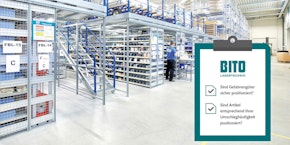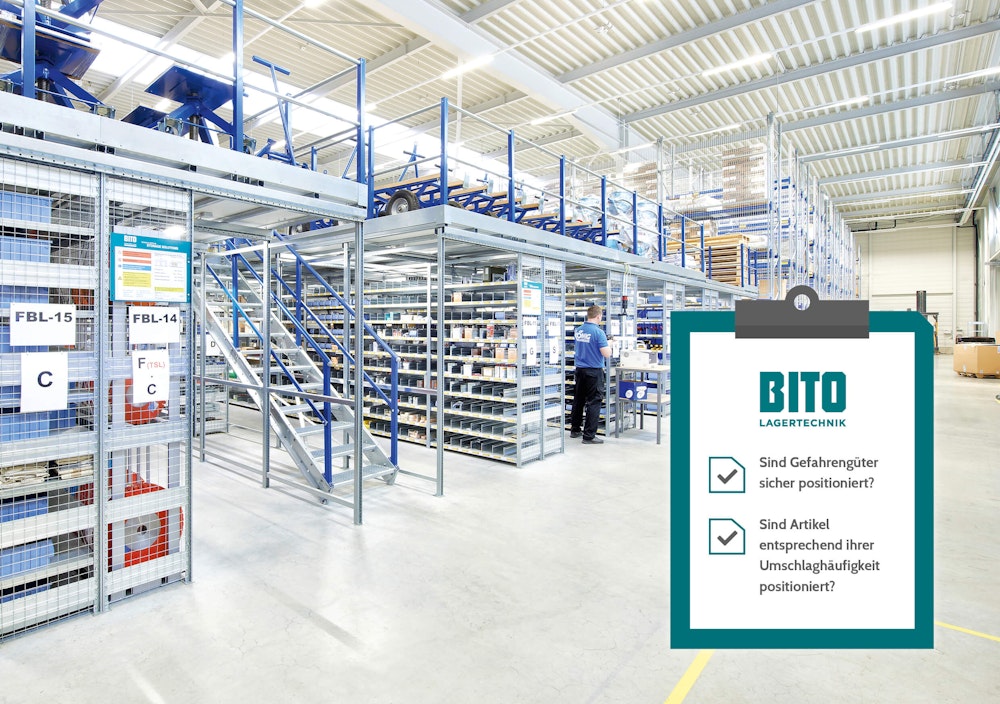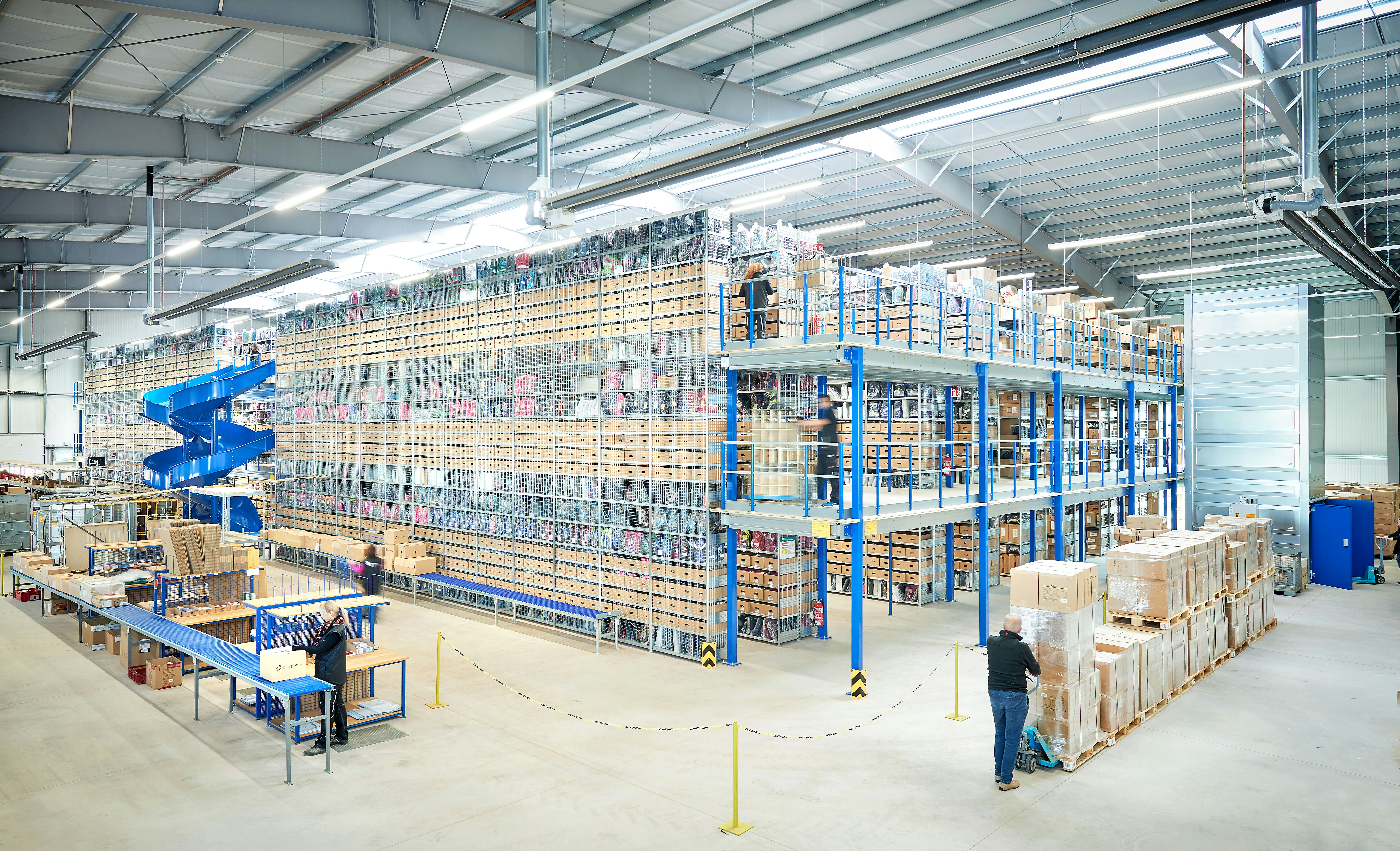Checklist for storage equipment


Warehouses are established according to a variety of factors. Primarily, the nature of the goods to be stored will determine the facility’s operating equipment. Liquids, solids and temperature sensitive materials will also each create their own requirements on the storage equipment. Heavy loads or hazardous materials also place different demands on the equipment compared to, for instance, goods for e-commerce businesses.
Storage equipment should therefore not only be high quality, safe and functional, it should also be adapted to meet the requirements of the stored goods. A properly organised warehouse must also conform to the needs of a company’s logistics operations to determine which stored goods are available in what quantities and where they are to be stored. This ensures that goods are stored properly, professionally and efficiently and that the operating areas are used sensibly.
Careful and detailed planning therefore goes into deciding storage facilities. Expert advice can help to tailor storage equipment to the specific requirements of a company. In addition to widely available standard sizes, specialist companies also supply custom-made cabinets and shelving and advise on the selection of the most appropriate containers to use.
- The nature of the goods and their condition
- The frequency that stock is turned in a year
- Space availability
- Arrangement of items
- Requirements of the enterprise resource planning system.
Type of goods stored
The first thing to consider is which containers and shelving will be required for the goods being stored. Considerations include:
- Are the goods easily perishable?
- What is their weight?
- How large or cumbersome are the stored goods?
- Are the substances solid or liquid?
- Are the goods sensitive to heat, cold or moisture?
- Are some goods always picked together as a bill of material?
- Are any items readily flammable?
- Are the goods dangerous?
- Are the goods bulky or easy to stack?
A well thought through arrangement of goods is indispensable for smooth order picking. Goods with a high turnover rate should be stored in such a way that they can be picked quickly and easily. With storage, the devil is often in the detail. If, for example, green shirts are stored next to green blouses, confusion can easily occur. Certain goods are also subject to statutory guidelines. For example, hazardous goods must be positioned in such a way that they comply with fire safety regulations.
Arrangement considerations include:
- Are similar, and therefore easily confused, products stored?
- Are goods positioned according to their turnover rate?
- Does the storage of hazardous goods comply with legal requirements?
- Are dangerous goods safely positioned?
Storage containers must suit the goods being stored and also the operation’s logistics. For example, goods can be stored in containers that differ in colour or use transparent containers, which allow the contents to be visible. It also makes sense for certain goods to be stored in mobile containers. If there are automatic small parts systems or continuous conveyor belts in the warehouse, care must be taken to ensure that the containers have an appropriate base. Containers with appropriate bases will move more smoothly and quietly on conveyors and rollers.
Container questions to ask include:
- Is the colour of the containers coordinated with the operations of the warehouse?
- Do the containers allow a visual inspection?
- Can storage containers be stacked?
- Are containers with integral rollers required?
- Can the containers also be easily transported by forklift truck?
Sometimes operations will require several storage areas, each with different equipment requirements. For example, it can be useful to create a warehouse for returns or goods that are no longer sold or need to be inspected. This is particularly true for the e-commerce industry, where the high number of returns requires separate returns warehouses. Questions to ask include:
- Is a receiving warehouse required where incoming goods can be inspected and orders processed?
- Is a warehouse required for defective or unsaleable goods?
- Is a returns warehouse required?
A storage facility is also influenced by the nature of the building and its space constraints. With thorough planning, existing space can be used effectively and storage capacity increased. Furthermore, it can be determined in advance whether the storage areas meet any legal requirements and regulations.
Topics to consider include:
- Is the floor level or does it have appropriate levelling floors and markings?
- Are fire protected locations available?
- Is the lighting sufficient and glare-free?
- Do the doors and gates comply with regulations?
- Are the storage rooms dry?
- Are there emergency escape routes?
- Are the transport routes of adequate size?
Goods should be evaluated according to certain criteria, with frequently ordered goods positioned so they can be picked quickly. Many logistics companies label their articles according to an ABC classification:
- Group A: fast-moving items. These are items such as foodstuffs that are often picked so their position must be quickly accessible.
- Group B: goods with an average turnover rate. These are placed centrally.
- Group C: items that can be stored for a long time. Being rarely picked, they can be stored in less accessible areas.
Pick frequency considerations include:
- Which goods are particularly profitable?
- Are the goods seasonal products?
- Which goods have a large or small sales volume?
However, the ABC classification is not always relevant. In the ecommerce business or in pure food warehouses, for example, all goods need to be handled quickly and therefore all potentially belong to Category A.
Logistics processes can be optimised with a merchandise management system. With such systems, goods flows are mapped so that picking can be handled quickly, securely and efficiently. Goods can be profiled, storage locations can be allocated and ideal routes for pick lists can be created.
For complete efficiency, even a well-planned storage facility will need extra items and tools to optimise logistics processes. Barcode scanners can minimise error rates and clear picking lists can shorten process routes and simplify collective picking. Lettering and labelling not only assist new employees, but also help experienced and trained personnel.
